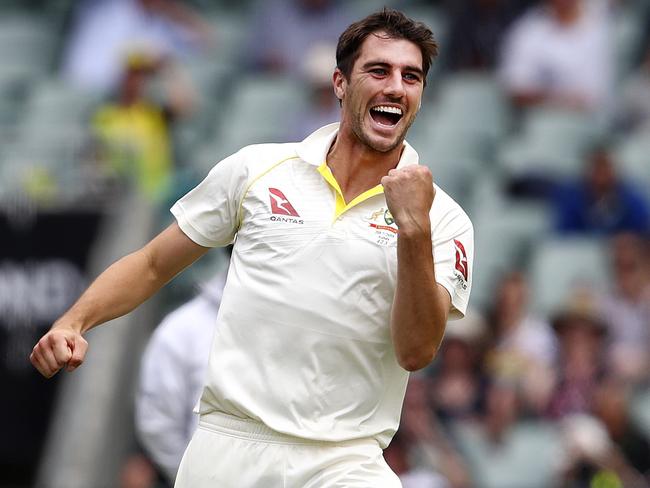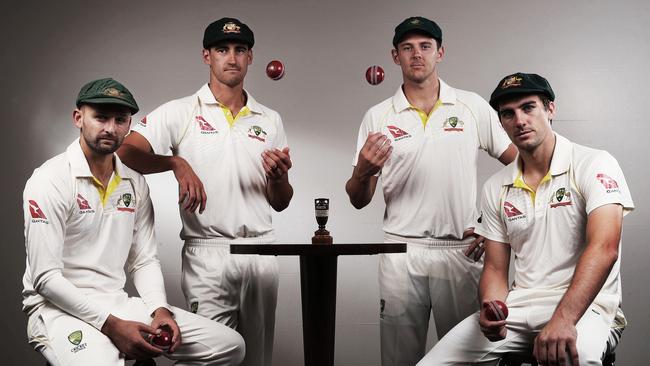Ashes 2017: Australia’s bowling quartet more than the sum of their parts, writes Robert Craddock
AUSTRALIA’s bowling attack is the best this nation has produced since Shane Warne retired — and now is time to prove it, writes Robert Craddock.

Cricket
Don't miss out on the headlines from Cricket. Followed categories will be added to My News.
AUSTRALIA’S bowling attack is the best this nation has produced since Shane Warne retired — and now is time they must prove it.
The bowlers will assemble sometime on day four with the task of nailing a second Test victory placed under a cloud by a rousing England comeback.
Australia captain Steve Smith must surely regret not electing to enforce the follow-on and subjecting England to the pink ball torture that Australia had to endure in the final session.

ROBERT CRADDOCK: ‘Normal’ Lyon tops the charts
FINGER: Paine won’t miss WACA Test
WOAKES: ‘I love the verbals. It’s great to be a part of it’
REPORT: Smith gives England sniff of chance
He pointed England to an unlocked door and for a while they threatened to blow it off its hinges.
But Australia’s attack look well equipped to handle the challenge of scything down England for a second day in a row.
Good things rarely come in fours in bowling attacks.
Most have a soft spot. Even the mighty West Indian sides of the 1980s lacked a decent spinner.
But Australia has four outstanding operators in good form, a rare cricketing event.
England’s pace attack finally got hot under lights at the Adelaide Oval with the swinging pink ball giving them extra teeth.
Jimmy Anderson revved up beautifully and his two wickets were a credit to his dauntless spirit and conjuring skills with the hooping ball. There were overs when every delivery seemed to be a ticking time bomb. Bare survival seemed the only objective and that was hard enough.
Chris Woakes also snared two wickets under conditions that may never be more suitable this series and we wondered whether we were watching a team grinding their back or giving one last yelp before the sky falls in.

But when the elements are neutralised, the ball softens, the sun shines and the clouds disappear, the one key difference between the sides is laid bare — pace — which is why England must strike early and often on day four.
England’s spearheads struggled to break 140kph while the younger Australians pushed the speed gun to and occasionally past 150kph.
Speed kills at this level. Australia has it. England doesn’t. And it is the one quality you can’t manufacture.
Australia loves to luxuriate in its history of rampaging fast bowlers but the most glamourous unions were pairs – Lillee and Thomson, Lindwall and Miller, McDermott and Hughes and McGrath and Gillespie.
But these units were at their best when these teams had third and fourth wheels vigorously spinning behind them.
Behind Lillee and Thomson, bowlers like the late Max Walker carved out some impressive numbers (138 wickets at 27) trapped in the giant shadow of the men in front of him.
Miller and Lindwall had Bill Johnston in support and McGrath and Gillespie had Brett Lee and Michael Kasprowicz before the ball even got to Warne.
But the strength of this attack is its evenness. On any given day any of the four bowlers, including spinner Nathan Lyon, could be the match winner and their skills complement each other.
Cummins, both work horse and cutting edge, is technically the junior member of the attack yet he may well become the best of the lot.

Australia will not always be able to have a hostile game plan like they did at times to the England tail, where all but two fieldsmen were behind square leg.
Bouncer after bouncer rained down on England’s tail from the likes of Cummins and England looked down and desperate and scrambling.
It said something about England’s top order that the most defiant looking batsman seen in the first two sessions was the granite statue of Clem Hill unveiled outside the ground.
He was deliberately portrayed with a look of arrogant defiance, a man who looked the world in the eye and often stared it down.
How England could have done with someone similar at the crease.
Originally published as Ashes 2017: Australia’s bowling quartet more than the sum of their parts, writes Robert Craddock
